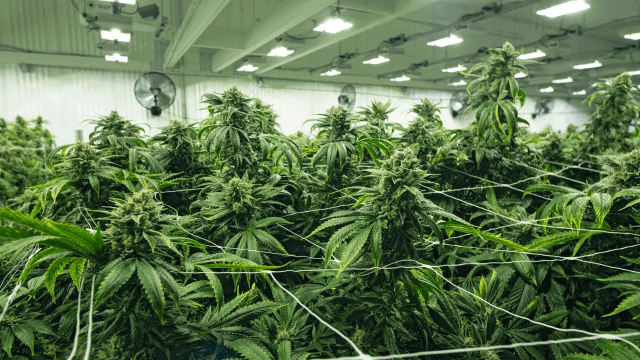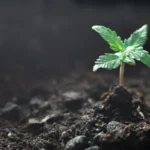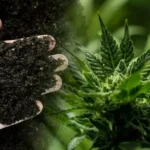Flushing cannabis plants is a practice in cultivation that can help ensure a high-quality and clean final product. By removing residual nutrients, salts and contaminants like heavy metals, flushing not only enhances the flavor and aroma but also ensures the product meets regulatory safety standards. Whether for home growers or large-scale operations, mastering this process can elevate the quality and safety of your cannabis harvest.
What is Flushing, and Why is it Important?
Flushing involves running clean water or a specialized solution through the growing medium during the final stages of cultivation. This practice removes built-up nutrients, salts and potentially harmful heavy metals from the plant’s system. The process forces plants to draw from their internal nutrient reserves, improving the quality of the final product and releasing heavy metals.
Key Benefits of Flushing
- Enhanced Flavor and Aroma
- Eliminates chemical residues, allowing terpenes to shine and ensuring a smooth, clean taste.
- Optimized Potency
- Redirects plant energy toward cannabinoid and resin production, maximizing THC and CBD levels.
- Cleaner Combustion
- Removes excess salts and minerals, leading to smoother burns and light-colored ash.
- Heavy Metal Mitigation
- Reduces the absorption of contaminants like cadmium, lead, arsenic, and mercury, ensuring products meet safety standards.
When to Flush Cannabis Plants
The timing of a flush depends on your growing medium and cultivation method:
- Soil: Begin flushing 1–2 weeks before harvest to allow for a gradual clearing of nutrients and salts.
- Coco Coir: Flush for 5–7 days before harvest due to the medium’s quicker nutrient exchange.
- Hydroponics: A shorter flush of 1–3 days is sufficient, as nutrients and contaminants clear rapidly in water-based systems.
Key Indicator: Yellowing leaves during flushing signal the plant is depleting stored nutrients, a sign the process is working effectively.
Flushing Heavy Metals
Heavy metals, including cadmium, lead, arsenic and mercury, can accumulate in cannabis plants through contaminated water, soil, or fertilizers. These metals pose serious health risks to consumers and are a significant concern for commercial growers, who must meet strict testing standards to ensure product safety.
Flushing is critical for:
- Reducing Absorption: Clearing heavy metals from the growing medium minimizes their presence in plant tissue.
- Meeting Compliance: Regulatory limits on heavy metals vary by jurisdiction, and failing tests can result in product recalls and financial losses.
Methods for Flushing Cannabis Plants
Plain Water Flushing
- Use pH-balanced water (6.0–6.8 for soil and 5.5–6.5 for coco or hydroponics).
- Water the plants thoroughly, ensuring runoff is collected and tested for decreasing electrical conductivity (EC) levels, which indicate a successful flush.
Flushing Agents
- Specialized solutions contain chelating agents that bind to salts and heavy metals, efficiently removing them from the growing medium.
- These products often include beneficial trace elements to support plant health during the final growth stages.
Monitoring the Flushing Process
- Test Runoff
- Check the EC and pH levels of runoff water regularly to ensure contaminants are being effectively removed.
- Watch for Over-Flushing
- Excessive flushing can lead to stress or nutrient deficiencies, particularly in soil-based systems.
- Inspect Plant Health
- Uniform yellowing of leaves indicates nutrient reserves are depleting appropriately, but severe wilting may require adjustments.
Final Steps for Maximum Results
- Inspect Trichomes
- Use a magnifying glass or microscope to check trichome maturity. Harvest when they shift from clear to cloudy, with some amber coloration, for peak potency and effects.
- Ensure Even Flushing
- Evaluate the entire plant, ensuring no areas of nutrient build-up remain.
- Test for Contaminants
- For commercial growers, third-party labs can confirm heavy metal levels are below regulatory thresholds.
Common Mistakes to Avoid
- Flushing Too Late: Not leaving enough time before harvest can result in retained residues.
- Ignoring pH Levels: Improper pH can damage roots and reduce flushing effectiveness.
- Overwatering: Excessive flushing can lead to waterlogged roots and stressed plants.
Conclusion
Flushing cannabis plants is an essential practice for ensuring a premium-quality product. By removing residual nutrients, salts, and heavy metals, growers can enhance flavor, aroma, and potency while meeting safety standards. Whether using plain water or specialized solutions, tailoring the process to your growing medium and setup ensures the best results.





